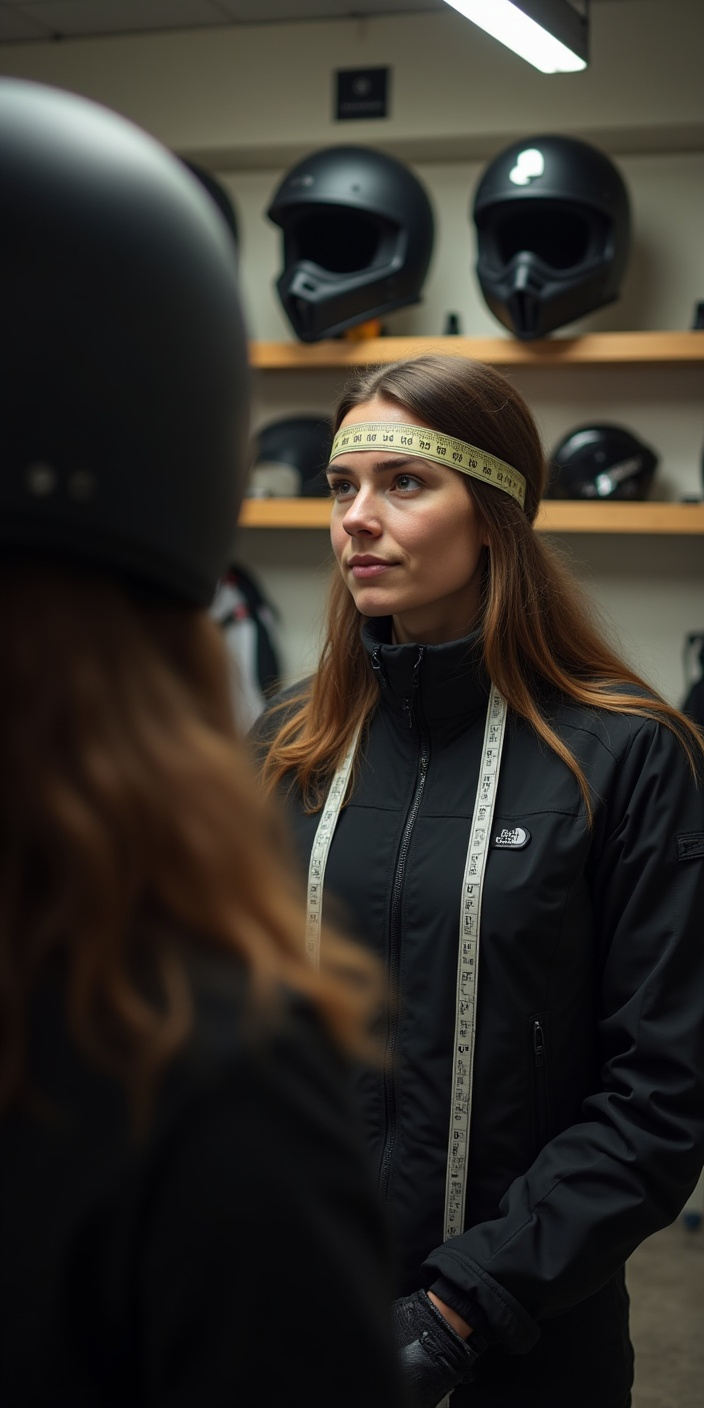Let’s be honest, choosing a helmet for bike riders isn’t just about picking the coolest design or the flashiest colour. If your helmet doesn’t fit right, it can be uncomfortable, distracting and, most importantly, unsafe. Whether you’re shopping for a motorcycle helmet or gearing up for your next motocross adventure, getting the helmet size and fit spot-on is crucial for both comfort and protection.
So, how do you make sure your helmet is the perfect match for your head? Let’s break it down step by step.
Why Does Helmet Size and Fit Matter?
A helmet that’s too loose can move around, come off in a crash or leave parts of your head exposed. Too tight and you’re in for headaches, pressure points and a ride you’ll want to forget. A well-fitted helmet stays snug, distributes pressure evenly and covers your head and neck for holistic protection, not just from impacts, but also from wind, rain and road debris.
How to Measure Your Head for a Motorcycle Helmet

Getting the right helmet size starts with a simple measurement:
-
Grab a soft measuring tape (or a piece of string and a ruler).
-
Wrap it around your head about 1 inch (2.5 cm) above your eyebrows and ears, the widest part of your head.
-
Note the circumference in centimetres or inches.
Now, compare your measurement with the manufacturer’s size chart. Helmet sizes usually range from XS (extra small) to XXL (extra extra large) and each size covers a specific head circumference (for example, Medium is typically 57–58 cm). If you fall between sizes, it’s usually best to go with the smaller size, as helmet padding will compress over time for a better fit.
Understanding Head Shape

Not all heads are created equal. Most helmet brands design for three main head shapes:
-
Round oval: Head is almost as wide as it is long.
-
Intermediate oval: Slightly longer front-to-back than side-to-side (most common).
-
Long oval: Noticeably longer front-to-back.
Try on different brands and models, some will suit your head shape better than others. The better the match, the better the comfort and safety. Whether you're looking at racing lids or motocross helmet fit, this understanding is key to getting it right.
The Fit Test: How Should a Helmet Feel?
When you put on a helmet:
-
It should feel snug all around, with even pressure, no painful spots or loose areas.
-
The helmet shouldn’t move when you shake your head side to side or up and down.
-
You shouldn’t be able to fit a finger between your forehead and the helmet’s padding.
-
The cheek pads should touch your cheeks without pinching. If you talk, your cheeks should move a bit, this is especially true for a motocross helmet.
-
The helmet should sit level on your head, with the top of the eye port just above your eyebrows.
Wear it for at least 10–15 minutes. Any discomfort will usually get worse on a long ride, so trust your instincts.
Chin Strap and Accessories Check
Fasten the chin strap and try to pull the helmet off, if it comes off or shifts easily, it’s too big. You should be able to fit two fingers between the strap and your chin for comfort, but it should still feel secure.
If you wear glasses or use a Bluetooth headset, make sure the helmet accommodates them comfortably. Some motorcycle helmets have special grooves for glasses or removable cheek pads for a custom fit.
Types of Helmets and Their Fits
-
Full-face helmets: Offer maximum coverage and are ideal for most riders, including those who tour or commute.
-
Open-face helmets: Lighter and offer more visibility, but less protection.
-
Modular helmets: Flip-up design for versatility, great for touring.
-
Motocross helmets: Feature extended visors and extra ventilation for off-road riding.
Choose the style that matches your riding needs, but never compromise on fit.
Common Mistakes to Avoid
-
Choosing by looks alone: Safety and comfort come first.
-
Ignoring head shape: A helmet can be the right size but the wrong shape.
-
Not trying it on long enough: Pressure points often show up after a few minutes.
-
Wearing a helmet that’s too loose: It’s better to start snug; the padding will break in over time.
-
Not checking for certifications: Look for ISI, ECE or DOT certification for reliable protection.
When to Replace Your Helmet
Even the best-fitting helmet for bike riders needs replacing every 5–7 years or immediately after a crash. Padding and materials degrade, which can compromise safety. It’s an essential part of maintaining your bike safety gear.
Find Your Perfect Fit at ReiseMoto
Ready to upgrade your helmet? Explore the ReiseMoto’s helmet collection,, featuring a range of styles and sizes for every rider—from urban commuters to off-road warriors seeking the right motocross helmet fit. Whether you're looking for a stylish urban lid or a snug off-road warrior, our expert team can help you master motorcycle helmet fitting with ease.
Not sure which size or model is right for you? Our team is always here to help you find your perfect fit.
Still have questions about helmet size chart or how to measure helmet size? Drop a comment or reach out to the ReiseMoto team—we’re here to keep you safe and comfortable on every ride!
-Team Reisemoto

